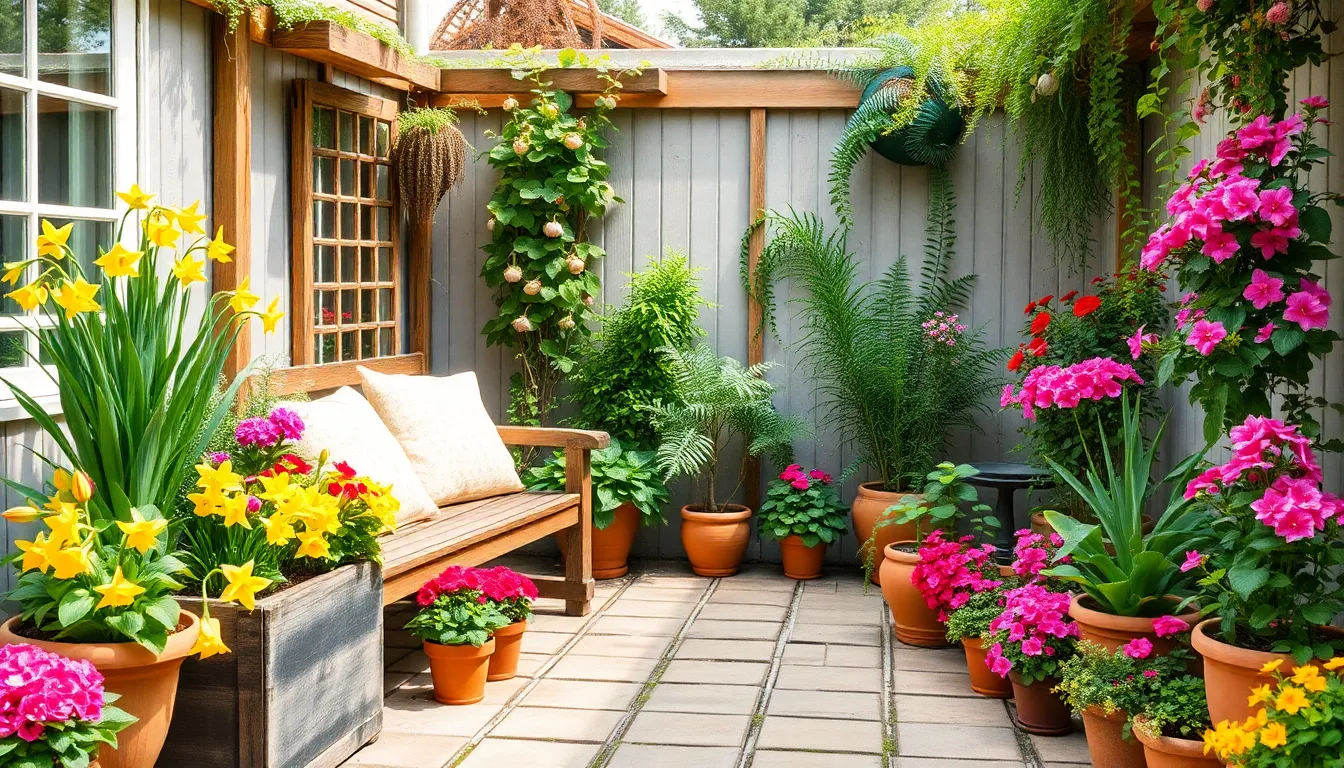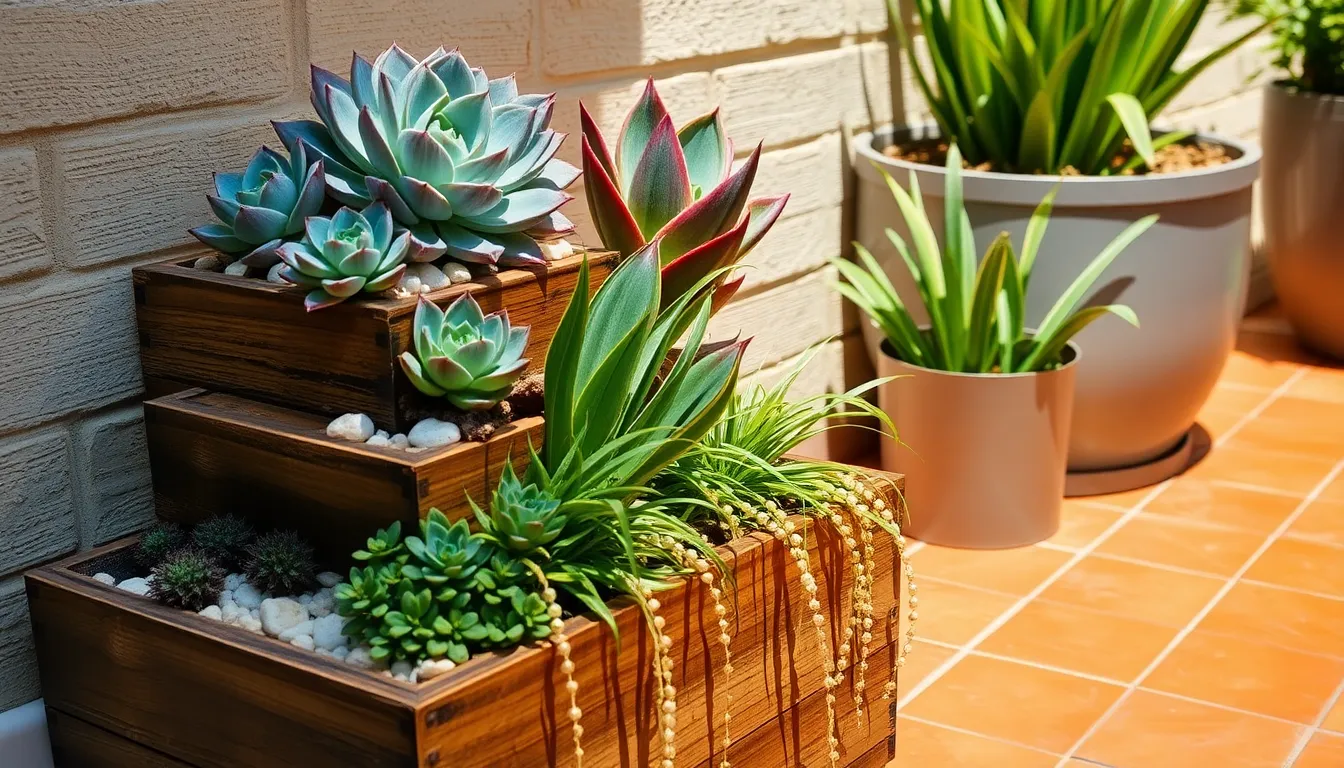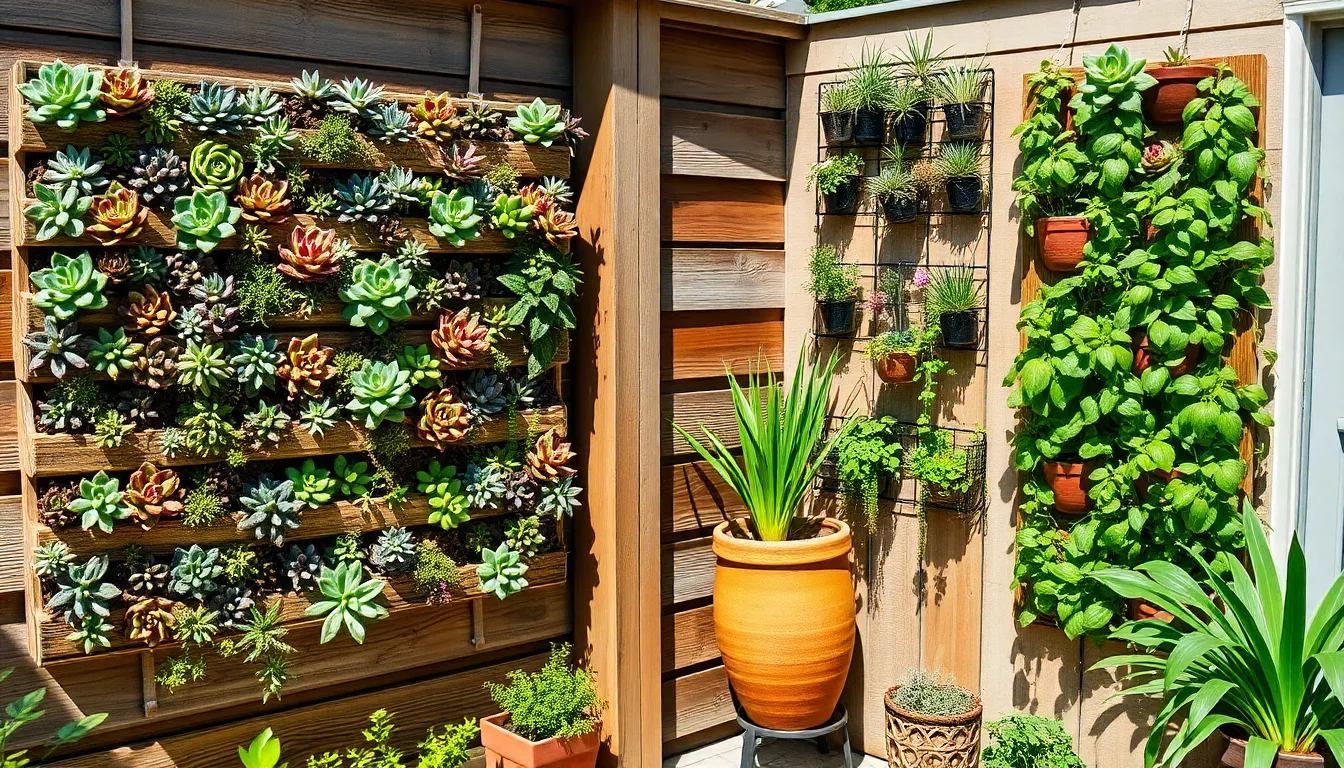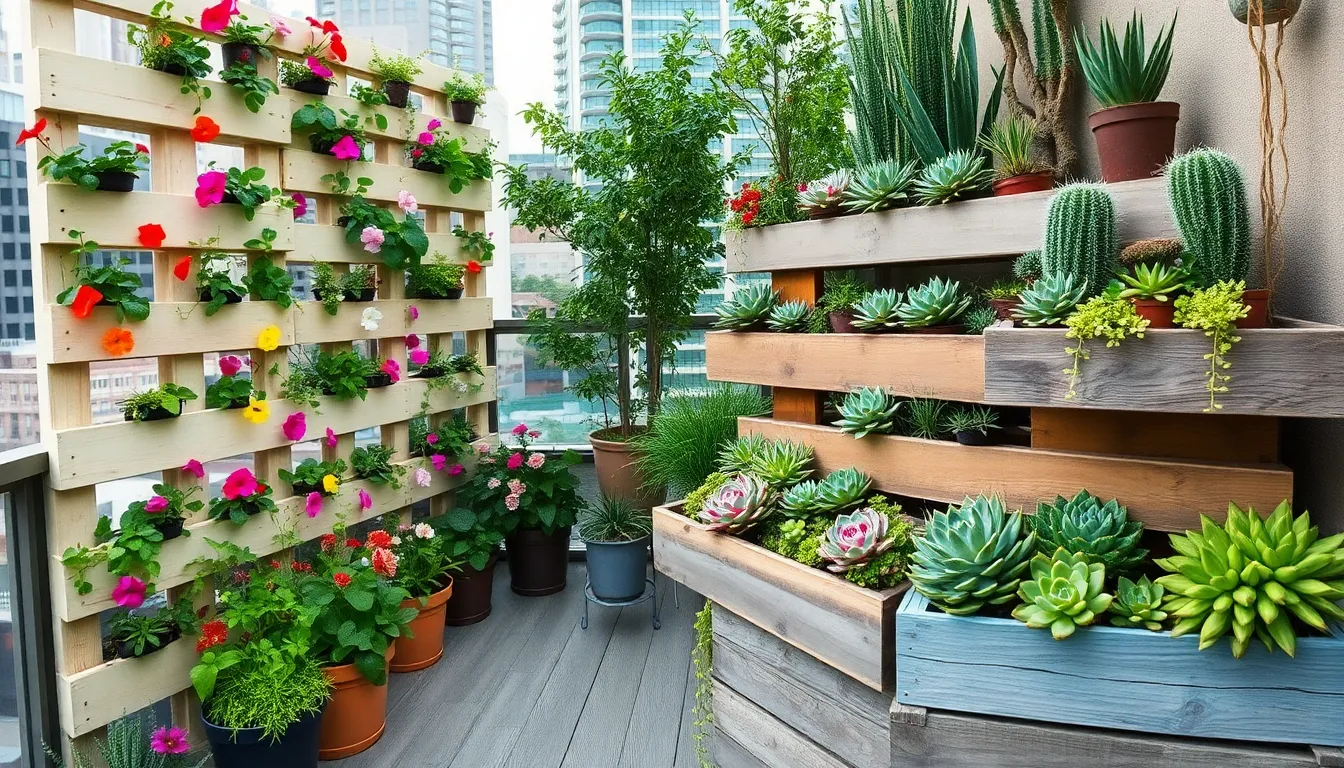Welcome to the world of patio gardening, where every season brings a fresh opportunity to transform your outdoor space into a vibrant oasis. Whether you’re a budding gardener or a seasoned green thumb, “9 Seasonal Patio Garden Ideas” is your gateway to discovering creative and practical designs that will not only beautify your patio but also bring you immense joy and satisfaction.
In this guide, you’ll find a treasure trove of ideas tailored to suit any gardener’s needs, from easy-to-maintain setups for beginners to more intricate designs for the experienced plant enthusiast. By following these thoughtfully crafted ideas, you’ll gain practical insights into maximizing your patio’s potential, ensuring that your garden thrives year-round. Get ready to dig in, experiment, and watch your patio burst into life, all while gaining confidence in your gardening prowess with each success.
Select Seasonal Blooms for Color
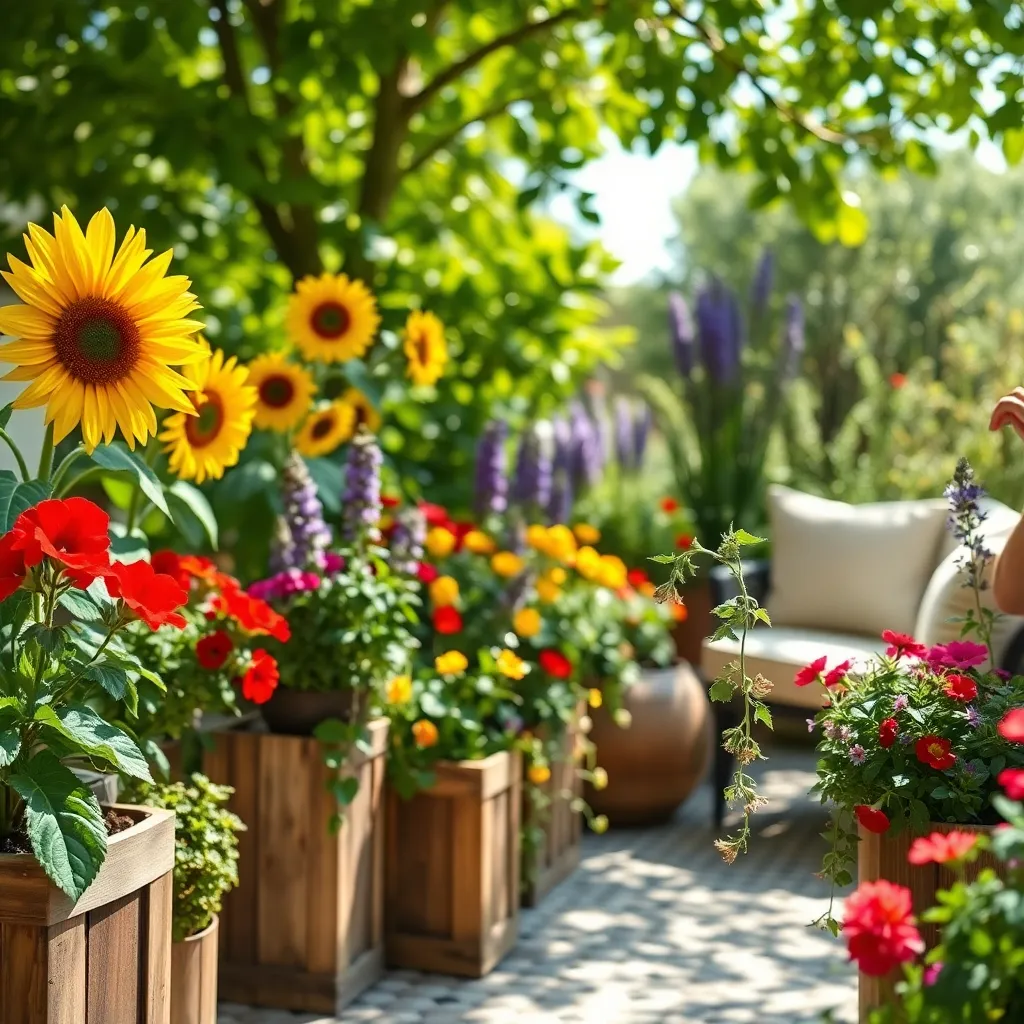
Choosing the right blooms for your patio garden can transform it into a vibrant, seasonal paradise. In spring, consider planting tulips and daffodils, as their early colors are a delightful way to welcome warmer weather.
During the summer months, opt for sun-loving flowers like zinnias and marigolds, which thrive in full sunlight and require well-draining soil. Water these plants consistently, ensuring the soil remains moist but not waterlogged, to promote lush blooms.
For autumn, chrysanthemums are an excellent choice, offering a burst of color as temperatures drop. Plant them in a spot that receives full sun and water them regularly, allowing the top inch of soil to dry out between waterings.
Winter doesn’t have to mean a colorless garden; plant pansies and violas, which can withstand colder temperatures. These hardy plants prefer a rich, well-draining soil and benefit from a balanced fertilizer every few weeks to maintain their vibrant display.
Incorporate Weather-Resistant Containers
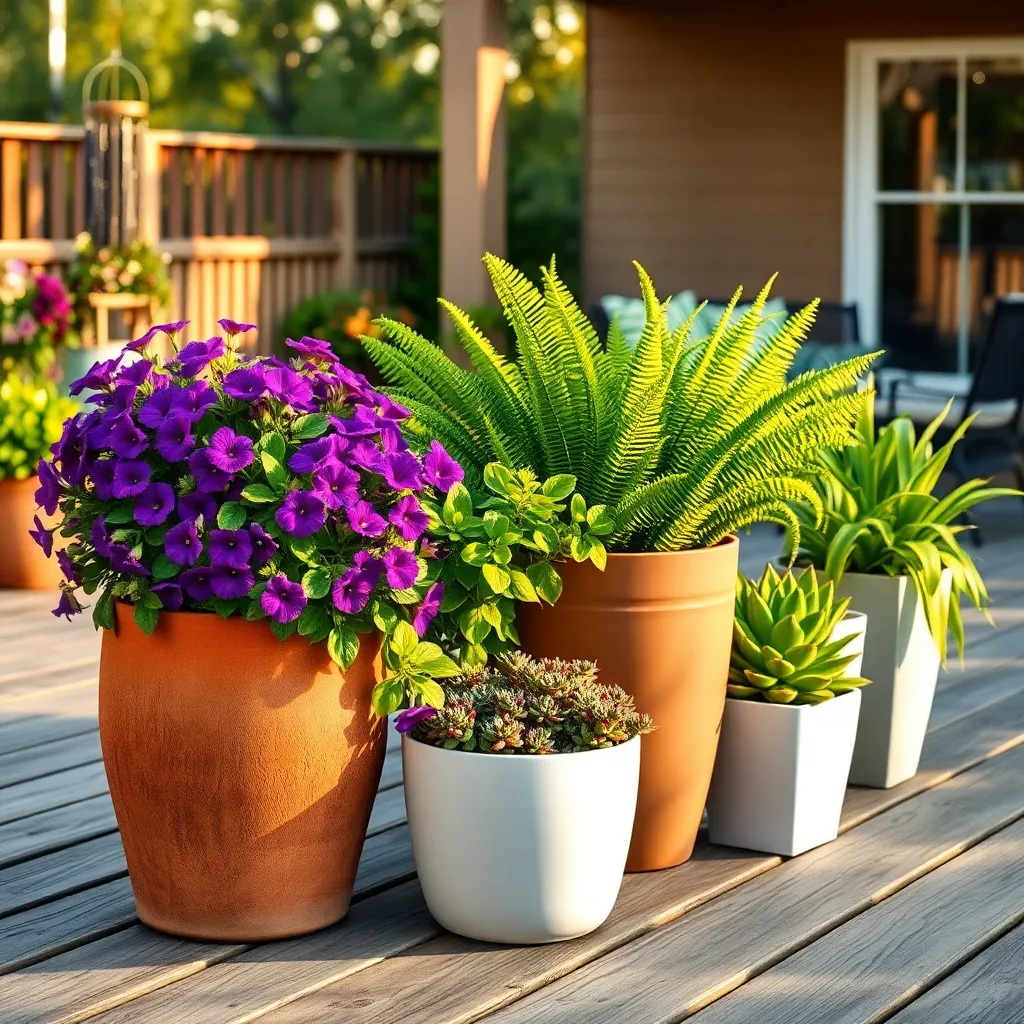
Incorporating weather-resistant containers into your patio garden can significantly extend the life of your plants. Choose containers made from materials like fiberglass, resin, or high-quality plastic, which are built to withstand harsh weather conditions.
It’s important to ensure these containers have proper drainage to prevent waterlogged roots, which can damage plants over time. Drill additional holes in the bottom if necessary, and consider adding a layer of pebbles to improve drainage.
For those looking to add a creative touch, select containers in different shapes and sizes to create visual interest. Mixing tall and short containers can help you design a dynamic and appealing garden space that is also functional.
Advanced gardeners might opt for self-watering containers, which can help maintain consistent moisture levels. These are particularly beneficial in areas with unpredictable rainfall, as they can reduce the need for frequent manual watering.
When choosing soil, a high-quality potting mix is essential for container gardening, as it provides adequate nutrients and retains moisture well. Adding slow-release fertilizer to the mix can also give your plants a steady supply of nutrients over time, supporting their growth throughout the season.
Experiment with different plant combinations to find what works best in your climate and conditions. Consider pairing drought-tolerant plants with those that enjoy similar watering schedules for optimal results.
Rotate Planters for Sun Exposure
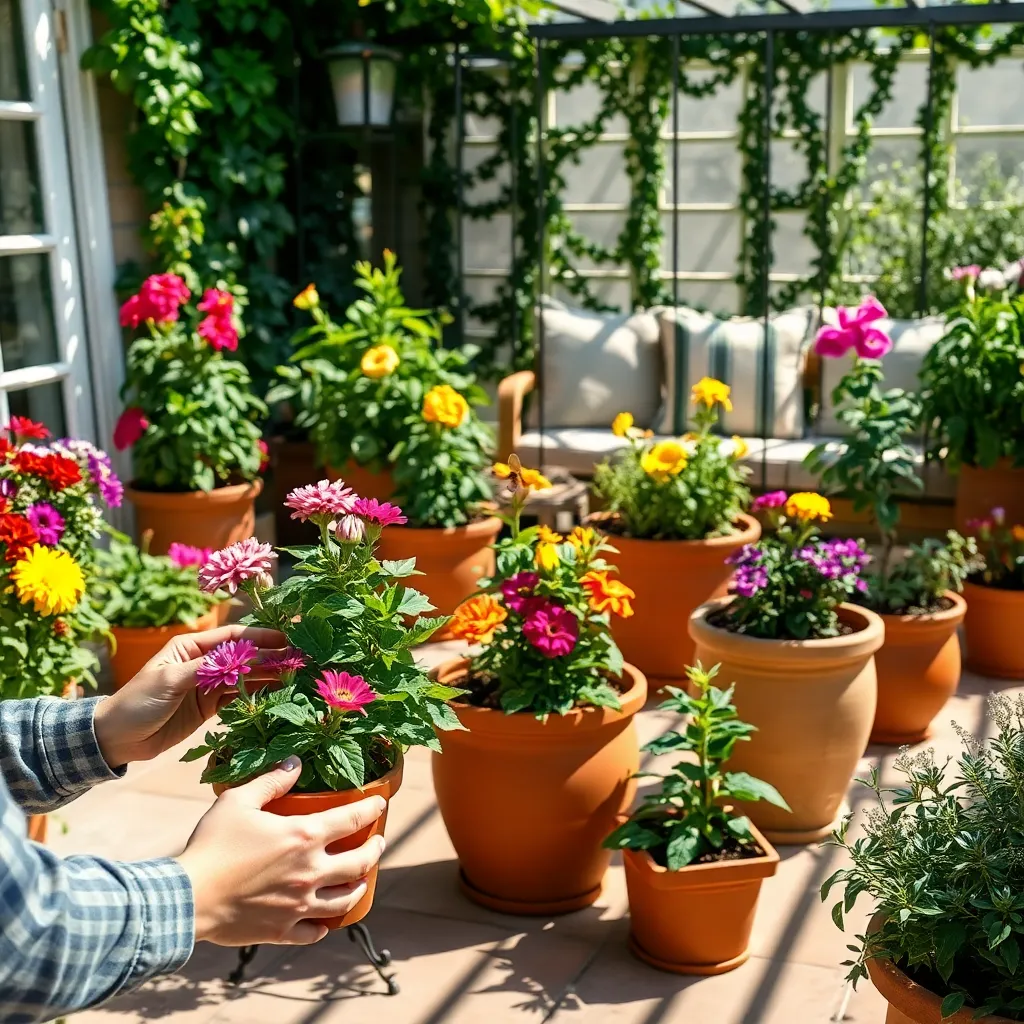
One simple way to ensure your plants thrive is by rotating your planters regularly for optimal sun exposure. Most plants need at least six hours of sunlight each day, so turning them every week helps distribute light evenly and encourages balanced growth.
Moreover, rotating planters can prevent plants from becoming “leggy” and top-heavy, as they won’t be straining to reach the light source. This practice is particularly beneficial for sun-loving plants like tomatoes, peppers, and herbs, which can become uneven if not exposed to consistent sunlight.
To make the most of your patio garden, consider using lightweight planters, which are easier to turn. Materials like plastic, fiberglass, or even certain types of lightweight ceramic can be ideal for easy rotation.
For more advanced gardeners, consider tracking the sun’s path across your patio throughout the seasons. This information will help you determine the best rotation schedule for each plant type, ensuring they receive the right amount of light as the sun’s angle changes.
Add Mulch for Moisture Retention
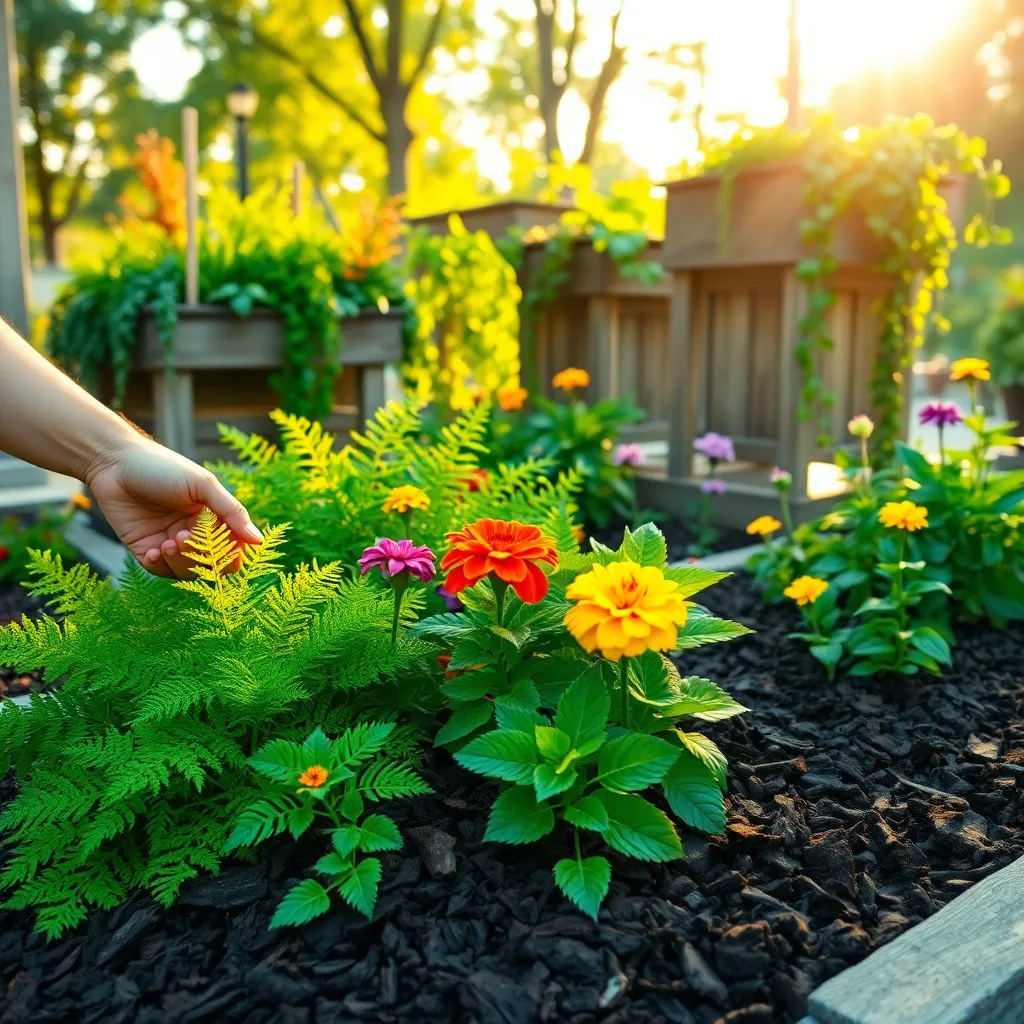
Using mulch in your patio garden is a simple yet highly effective way to maintain soil moisture. Mulch acts as a protective barrier, minimizing water evaporation and keeping your plants hydrated longer.
To get started, choose an organic mulch such as shredded bark, straw, or wood chips. Spread a layer about 2 to 3 inches thick over the soil surface, ensuring it stays a few inches away from plant stems to prevent rot.
Besides retaining moisture, mulch also helps regulate soil temperature, creating a stable environment for your plants. This is particularly beneficial during temperature fluctuations in spring and fall, providing your plants with a buffer against extreme conditions.
Advanced gardeners can use mulch as a tool for weed suppression, reducing competition for nutrients. Regularly check and replenish the mulch layer as needed, especially after heavy rains, to keep your garden thriving.
Prune Regularly for Healthy Growth
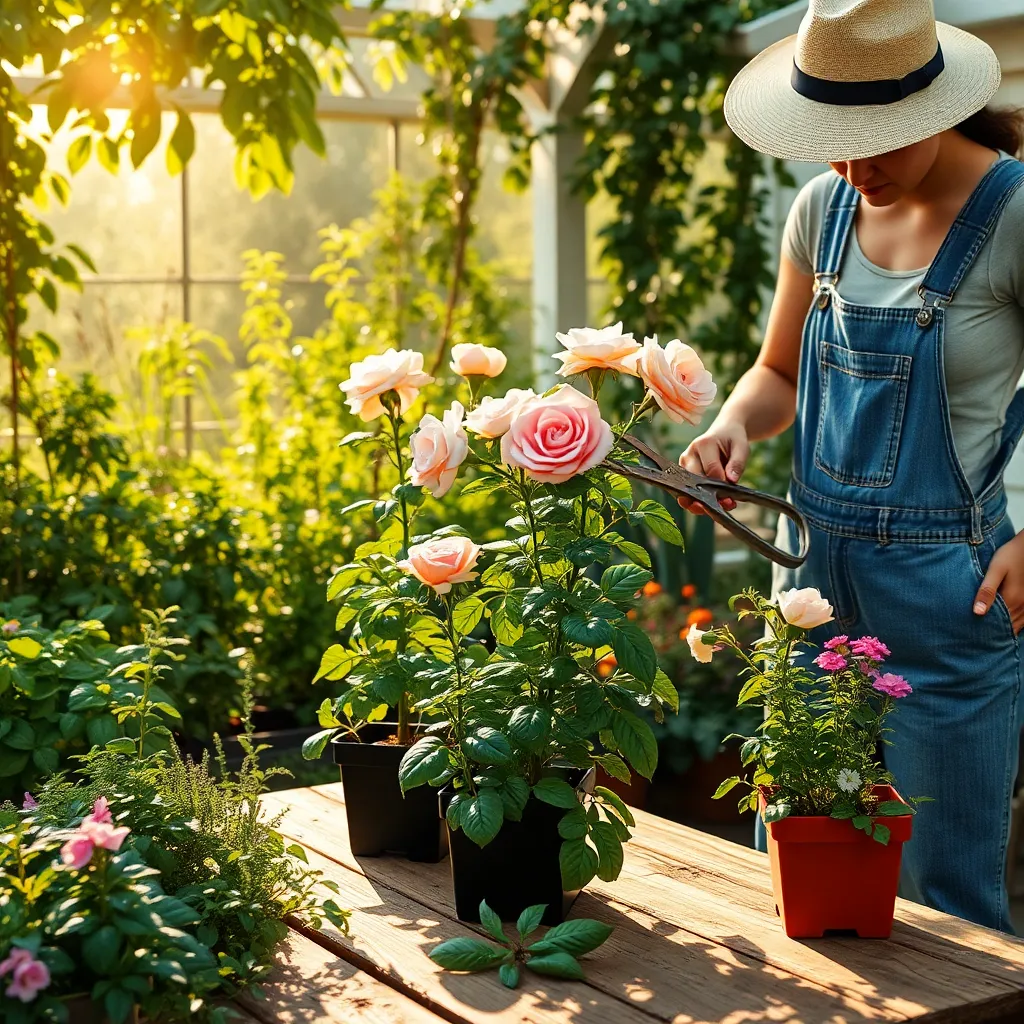
Regular pruning is essential for maintaining a healthy and vibrant patio garden. By cutting back dead or overgrown branches, you encourage new growth and prevent diseases from taking hold.
For beginners, it’s crucial to understand that each plant has its own pruning needs. Herbs like basil and mint benefit from frequent pinching back to encourage bushier growth, while woody plants such as rosemary might only need seasonal trimming.
Advanced gardeners can experiment with more precise techniques like thinning cuts, which help increase light penetration and air circulation. This is particularly useful for fruit-bearing plants, as it boosts both yield and quality.
When pruning, always use sharp, clean tools to make clean cuts that heal quickly. Disinfect your tools between plants to avoid spreading diseases, especially when working with plants that have shown signs of infection.
Arrange Plants by Height
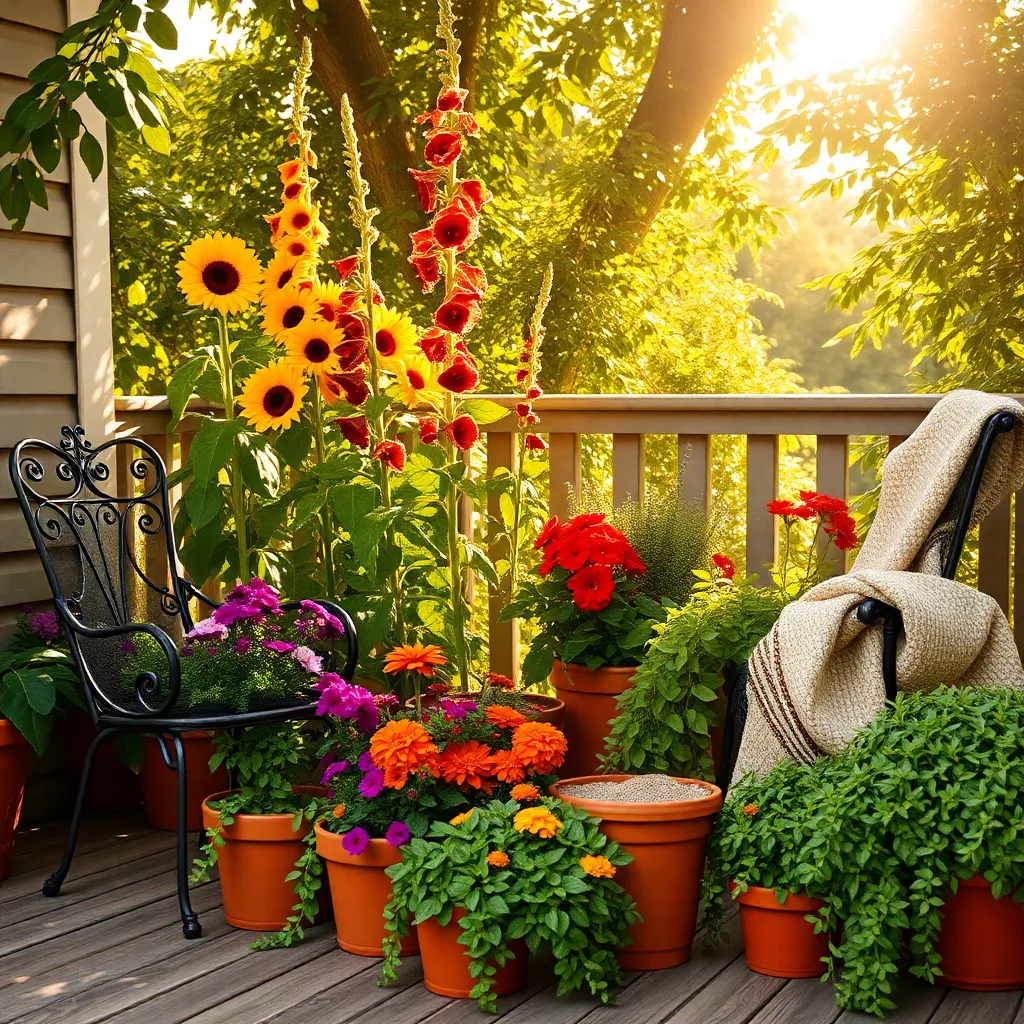
Arranging plants by height can create a visually pleasing and organized patio garden. Start by placing taller plants like sunflowers or ornamental grasses at the back, where they can serve as a backdrop for shorter plants.
Medium-height plants, such as lavender or marigolds, should be positioned in the middle layer, providing a seamless transition between tall and short plants. This arrangement not only enhances aesthetics but also ensures that all plants receive adequate sunlight.
For the front layer, select low-growing plants like creeping thyme or petunias, which add color and texture without blocking the view of taller plants. These shorter plants often require less water, making them ideal for the edge of your patio garden where water runoff might be higher.
Consider the specific needs of each plant when arranging by height to maximize their growth potential. For instance, while tall plants may need staking to withstand wind, shorter plants might benefit from more frequent watering due to faster soil drying.
Install Drip Irrigation Systems
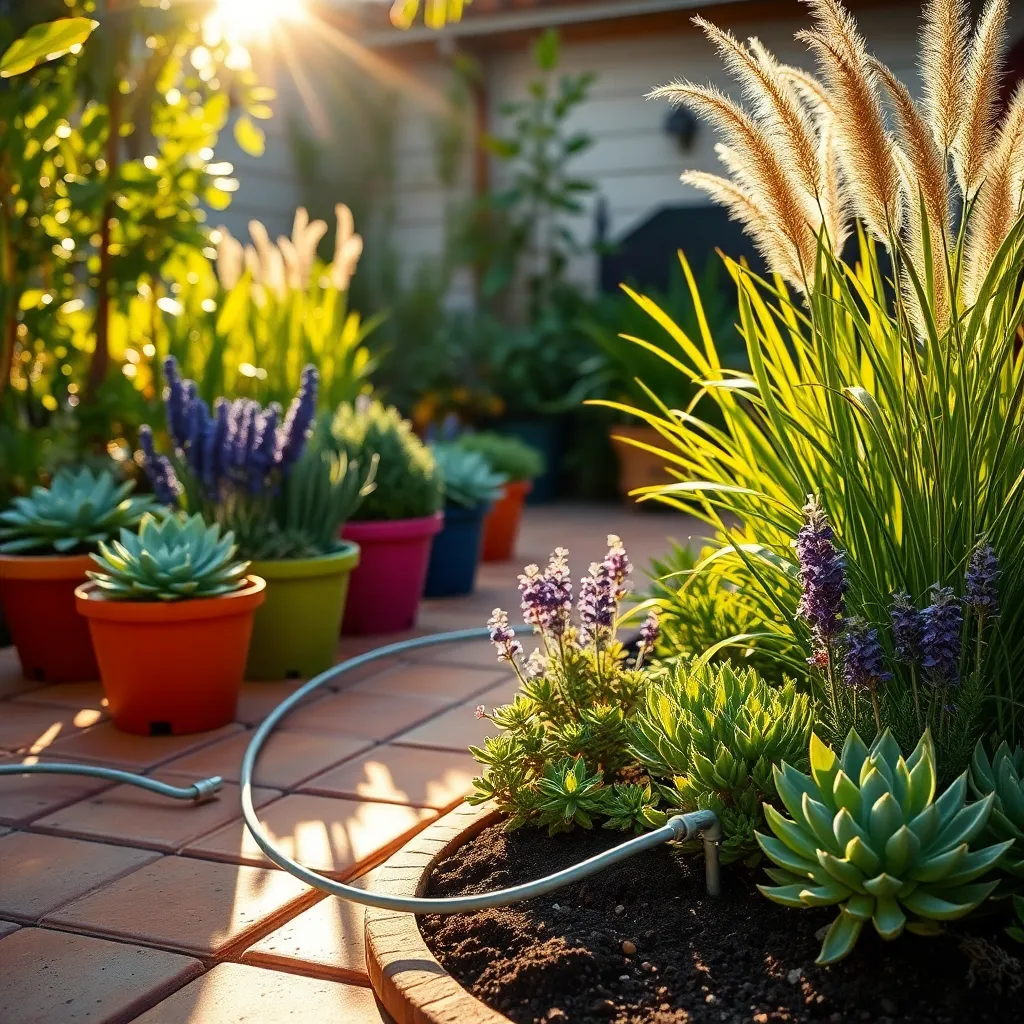
Installing a drip irrigation system can significantly improve the efficiency of your patio garden. By delivering water directly to the base of each plant, drip irrigation minimizes water waste and ensures that plants receive consistent moisture.
To set up a basic system, begin by selecting a quality drip irrigation kit that suits your garden size. Most kits come with adjustable emitters, which allow you to control the water flow to different plants based on their specific needs.
First, layout the mainline tubing to connect your water source to each plant. Ensure the tubing runs close to the base of your plants, and use stakes to secure it in place, preventing any movement.
Next, attach emitters to the tubing near the roots of each plant. Adjust the emitters to provide more or less water depending on the plant’s requirement, such as a higher flow for thirsty tomatoes and less for succulents.
Experiment with different watering schedules to find the optimal frequency for your garden. A typical schedule might involve running the system in the early morning for one to two hours, allowing for deep soil penetration without loss to evaporation.
Advanced gardeners can incorporate a timer for automated watering, ensuring that plants are consistently cared for even when you’re away. Regularly check the system for clogs and leaks, and clean the emitters as needed to maintain optimal performance.
Use Vertical Space Creatively
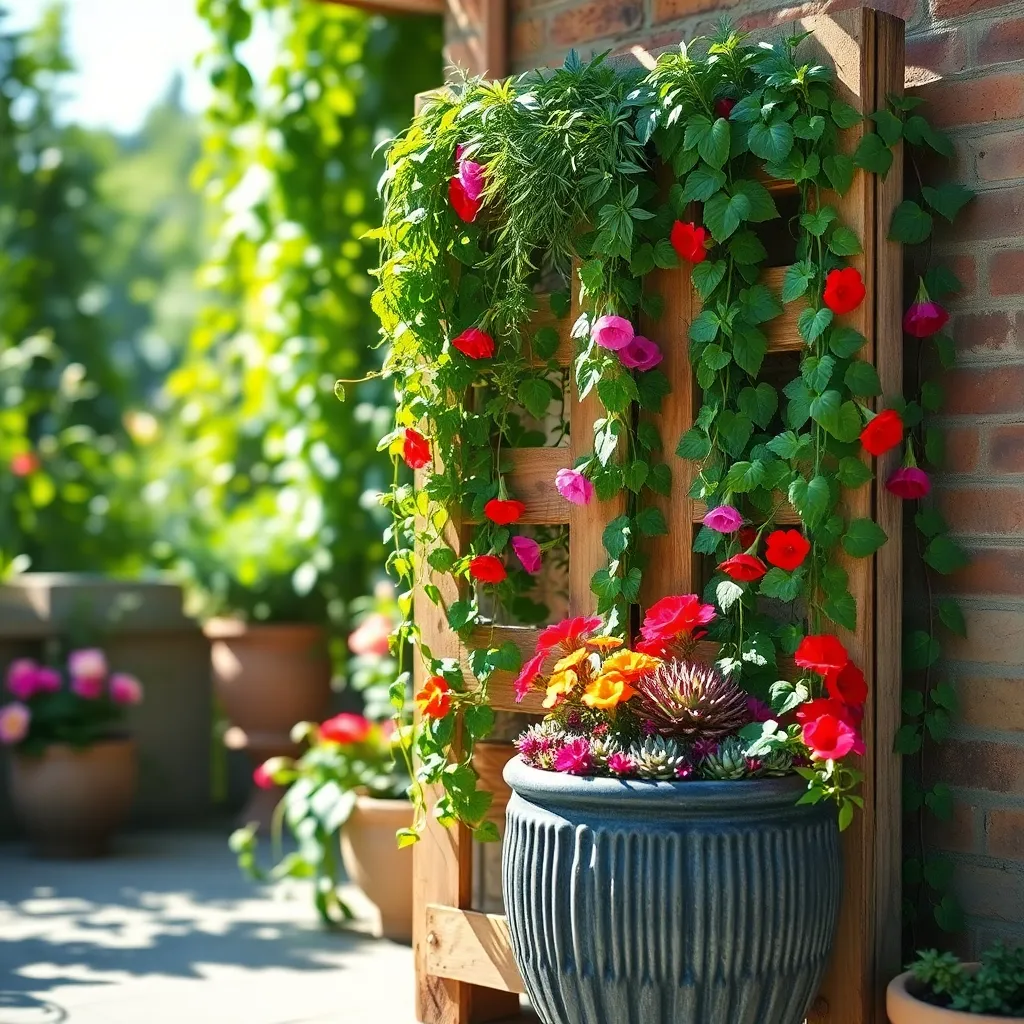
Vertical gardening maximizes space on your patio, allowing you to grow a diverse array of plants even in small areas. Consider using wall planters, trellises, or hanging pots to create a lush, green wall that can also serve as a privacy screen.
When choosing plants for vertical gardens, focus on those that thrive in tight spaces and have trailing or climbing habits. Herbs like thyme, mint, and basil are excellent choices, as they adapt well to vertical growth and can be easily accessed for cooking.
Ensure that your vertical garden receives adequate sunlight, as most plants require at least 4-6 hours of direct sunlight daily. If your patio is shaded, opt for shade-tolerant plants such as ferns or hostas, which will add texture and depth to your arrangement.
Regular watering is crucial for vertical gardens since containers tend to dry out faster than ground beds. Invest in a drip irrigation system or self-watering planters to maintain consistent moisture levels, reducing the frequency of manual watering.
Switch Decorations Each Season
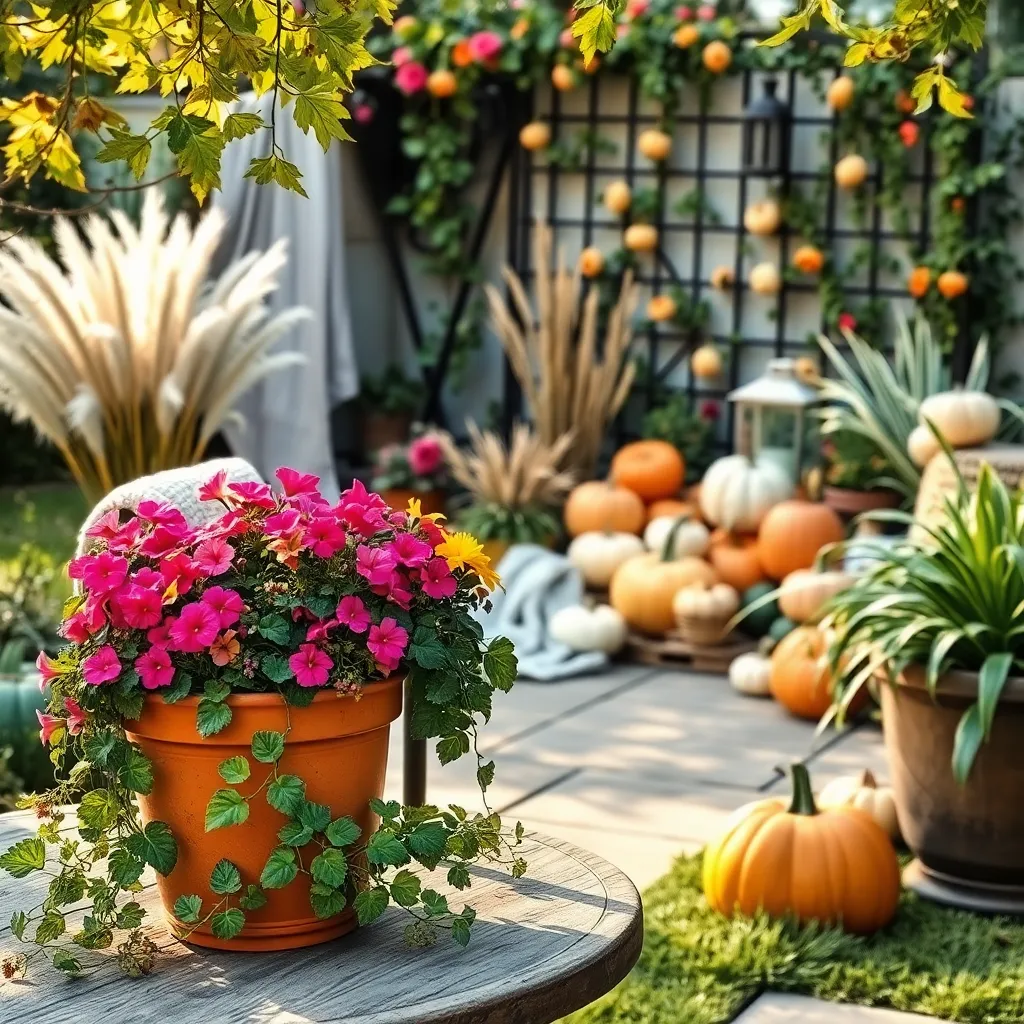
Changing patio decorations with each season can breathe new life into your garden space. Start by selecting versatile containers that can be easily moved or rearranged as needed.
In spring, focus on adding vibrant colors with flowering plants like pansies and tulips, which thrive in cooler temperatures. Ensure these plants receive adequate sunlight and are planted in well-draining soil to prevent root rot.
Summer calls for more heat-tolerant choices such as marigolds and succulents, which can handle the increased sunlight and warmth. Water these plants regularly but allow the soil to dry slightly between waterings to maintain optimal growth conditions.
As autumn arrives, incorporate decorative elements like pumpkins and gourds alongside hardy plants such as chrysanthemums. Add a layer of mulch to help retain moisture and insulate roots as temperatures begin to drop.
Winter decorations can include evergreens and holly, offering greenery even in colder months. Protect these plants from harsh winter winds by positioning them near walls or using windbreaks, and ensure they have adequate drainage to prevent waterlogging.
Conclusion: Growing Success with These Plants
As we wrap up our exploration of ‘9 Seasonal Patio Garden Ideas,’ let’s revisit how these innovative concepts can nurture your relationships. We began with the power of creating a cozy seating area, fostering intimate conversations and shared moments. Next, we discussed how a dynamic herb garden can symbolize growth and renewal in your bond. The introduction of a seasonal flower bed serves as a vibrant reminder of beauty and variety in relationships. We also delved into vertical gardens, which inspire growth against the odds, and water features that bring calm and balance. Shared gardening projects encourage collaboration and unity, while outdoor lighting sets the stage for magical evenings together. A fire pit represents warmth and connection, and container gardens offer versatility and adaptability, mirroring the resilience of healthy relationships.
As an actionable next step, choose one idea to implement this weekend, transforming your patio into a relationship-enhancing haven. Bookmark this article to revisit these ideas, ensuring your relationship continues to flourish with each season.
Remember, the seeds of effort you plant today will blossom into enduring relationship success tomorrow. Save this article, embrace these ideas, and watch your relationship thrive.

